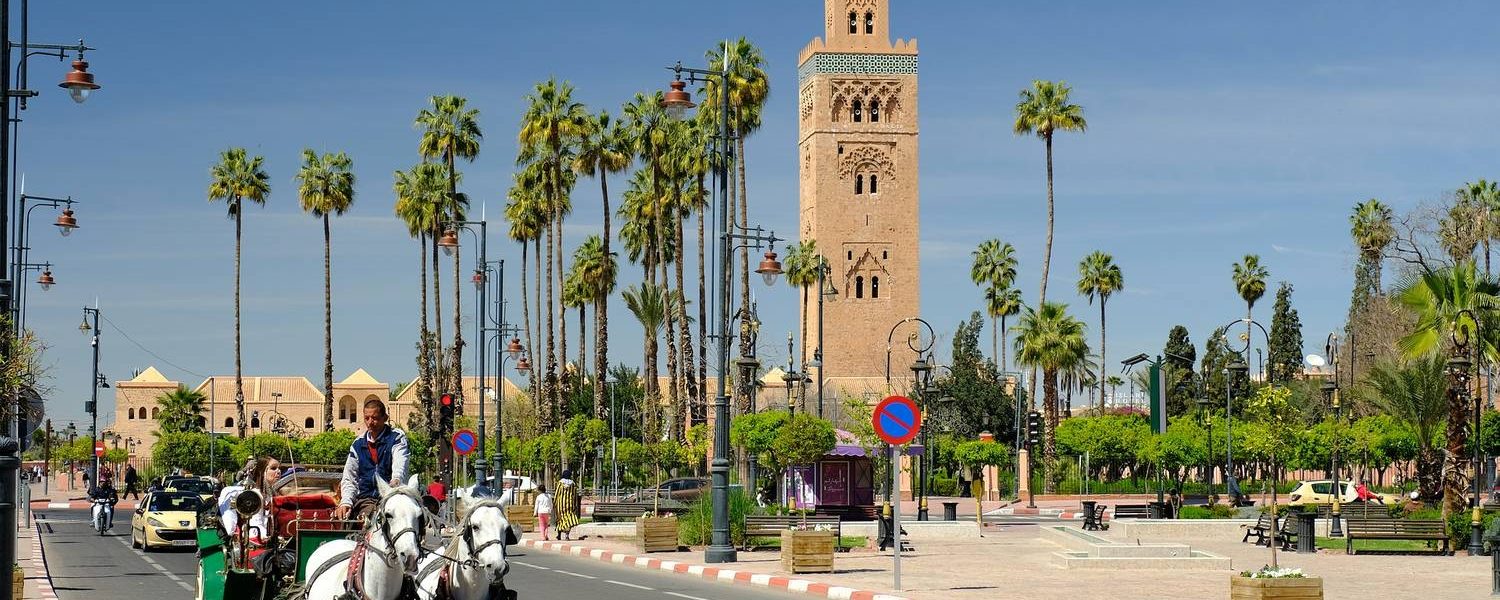

Such is the importance of Marrakech that it gave its name to Morocco. For more than two centuries, this Berber city at the point of interchange between the Sahara, the Atlas and the Anti Atlas was the hub of a great empire, and the achievements of illustrious builders can be seen within the city’s walls. It is the capital of the great south, and its fabulous palaces and luxuriant palm grove continue to hold a powerful fascination for visitors.
Marrakech the red is the heart that beats an African identity into the complex soul of Morocco. The city walls, overlooked by the Koutoubia minaret, are framed against the towering blue wall of the high Atlas Mountains. From outside the city promises much, but at first it may seem to contain nothing more than a vast transitory souk. The Jamaa el Fna, the celebrated square at the centre of the medina, this huge square is the heart of Marrakech, and comes most alive at night with snake charmers, monkeys, traditional musicians, and storytellers, there is always more than one thing to engage you at a time. You will also be drawn to the rows of open-air restaurants that offer an endless selection of mouth-watering food. Another memorable way to spend the evening is with a horse and carriage tour around the city.
The Phoenicians, Romans, Arabs and idrissid ruled over a mere portion of Morocco, a patchwork of hills and the northern Atlantic coast. The empire of Morocco was first created not by any of these distinguished, alien powers, but by a Berber tribe from the depths of the Western Sahara, they were the first to forge a Moroccan identity by linking a vast continental hinterland to the civilized lands of the northwest. Marrakech was the own terms. Here they brought together, like heraldic symbols of the future state, palm trees from the desert and craftsmen from Andalusia, Marrakech has retained its aura of African exoticism, while its guaranteed dry heat, the heady atmosphere of its souk, its celebrated monuments, and the nearby high atlas mountain valleys have a universal appeal.
Archaeologists have found that the site of Marrakech has been almost continually occupied since Neolithic times; it was once the proud capital of a massive empire that ran through the present day Africa to Europe. The empire covered an area from Spain to Senegal. From an early age Marrakech had been a key destination for business purpose a sit laid on the crossroads of ancient caravan routes from Timbuktu. It was the supply chain route for precious materials like gold, salt and slaves bound for Europe for the sub-Saharan traders. The rich heritage of Marrakech includes the ravishing snow-capped Atlas Mountains, age old palm groves, faded red ochre walls and the enchanting Arabian music that casts a magical spell in the mind of the travelers.